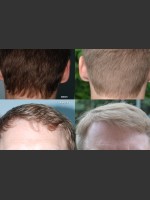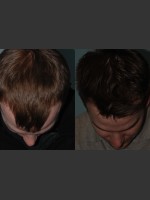How to Treat Hair Loss
Hair loss is typically thought of as something that only men are subjected to, but 40 percent of women will suffer from hair loss. For men, the statistics are much higher. According to the American Hair Loss Association, two-thirds of men will begin to notice some hair loss by age 35. Once most men turn 50, about 85 percent of men will have experienced a significant amount of thinning.
Dr. Marc Avram is a Harvard-trained, board-certified dermatologist and hair loss specialist, practicing in the Upper East Side of New York City. Prejuvenation had an opportunity to sit down with Dr. Avram to discuss the different hair loss treatment options for men and women while covering the Harvard “What’s the Truth” Meeting in Boston. In the first of this two-part series, Dr. Avram establishes the variety of treatments available.
First Step: See a Board-Certified Dermatologist
“If you’re losing your hair, first go see a dermatologist who can diagnose why you're losing your hair,” states Avram. Dr. Avram says sometimes people think they have what’s called male and female pattern hair loss, which is the most common reason, but they actually have another condition.
Some possible reasons for hair loss could be stress, illness, major surgery or a serious infection. It also can happen after a sudden change in hormone levels, a side effect of medication or even an auto-immune disease. Once you see a dermatologist and have a diagnosis, then you can figure out the best treatment plan.

Medical Hair Loss Options
Avram says the most common medications available include Minoxidil- the brand name is Rogaine, and Finasteride- the brand name is Propecia. Other common options include Platelet Rich Plasma (PRP) and lasers to stimulate hair growth.
On the Surgical Side...
Hair transplant surgery takes about 3 to 6 hours depending on the size of the thinning area. Avram explains transplants can be done by either elliptical donor harvesting or robotic follicular unit extraction. Both techniques produce natural-appearing transplanted hair.
The elliptical transplant is where hair follicles are harvested from the back of the scalp in a thin line and then the scalp is sutured leaving a horizontal scar across the back of the head. This scar can be hidden when the hair is grown out slightly.
During Follicular Unit Extraction, hair is removed by the thousands from the back to the front of the scalp where you’re thinning, without a single stitch in the scalp.
After Transplant Surgery
According to Avram, when the transplant is complete, a dressing is applied and the patient is able to go home. Patients can return to normal activity immediately, although it’s recommended to take a few days to rest from any heavy exercise or strenuous activities. While everyone's results can vary, the transplanted hair will begin to grow 4 to 6 months after the procedure and have maximum cosmetic impact 12 to 18 months after the procedure.


